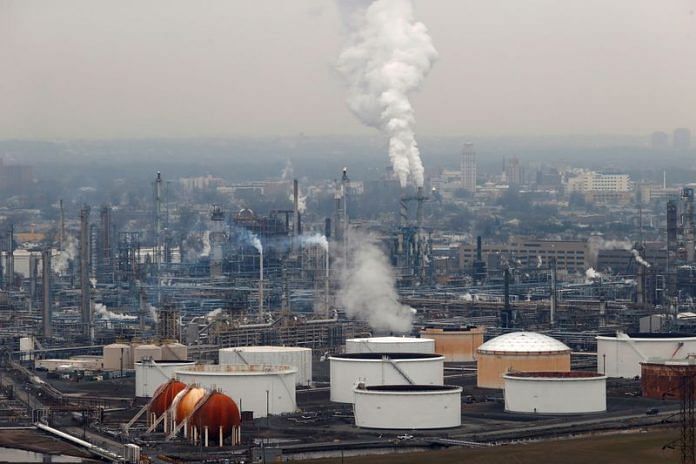By Erwin Seba
HOUSTON (Reuters) -Brent and U.S. crude futures turned positive during a see-saw session, in which prices fell more than $1 a barrel at one point on Friday, as traders tried to reconcile signals for oil demand in the coming year.
Brent futures rose 22 cents, or 0.29%, to $76.83 a barrel at 11:39 a.m. (1739 GMT). U.S. West Texas Intermediate (WTI) crude gained 5 cents, or 0.07%, to $71.63.
The market tumbled earlier in the session after a New York Federal Reserve Bank manufacturing survey showed a third month of declines in new orders, which could be a sign of weaker demand for oil in the coming year.
“What started the sell off was the sharp drop in the New York manufacturing numbers,” said Phil Flynn, analyst at Price Futures Group.
“This market seems a little more sensitive to every new headline,” Flynn added. “They’re still not sure we’ve found the bottom to this market.”
Traders were also shaken by comments from New York Federal Reserve Bank President John Williams on Friday about hopes for interest rate cuts in the coming year.
“We aren’t really talking about rate cuts right now,” Williams said in an interview with CNBC. When it comes to the question of lowering rates, “I just think it’s just premature to be even thinking about that” at this point, he said.
On Thursday Federal Reserve Chairman Jerome Powell said interest rate hikes intended to curb inflation were likely at an end, but left open the possibility for further increases.
The dollar fell to a four-month low on Thursday after the U.S. central bank after Powell’s comments, seeing signs lower borrowing costs are coming in 2024. The dollar index was broadly steady on Friday.
A weaker dollar makes dollar-denominated oil cheaper for foreign buyers.
World oil consumption will rise by 1.1 million barrels per day (bpd) in 2024, the IEA said in a monthly report.
While that is a 130,000-bpd increase from its previous forecast, the estimate is less than half of the Organization of the Petroleum Exporting Countries’ (OPEC) demand forecast of 2.25 million bpd.
OPEC and allies led by Russia, in late November agreed on voluntary cuts of about 2.2 million bpd lasting throughout the first quarter.
“The markets in general and oil in particular are trying to sort out what’s going on,” said John Kilduff, partner with Again Capital LLC. “Everyone’s trying to feel their way.”
Weak economic data from Germany, Europe’s biggest economy, and China, the world’s biggest oil importer, weighed on prices, however.
The HCOB German Flash Composite Purchasing Managers’ Index (PMI), compiled by S&P Global, fell for the sixth consecutive month, declining to 46.7 in December from November’s 47.8, below the 48.2 forecast by economists.
Data released by China’s statistics bureau on Friday showed refinery runs in November dropped to their lowest level since the start of 2023, as margin pressure on non-state owned refiners saw them cut back production, while sluggish diesel consumption weighed on national fuel demand.
(Reporting by Erwin Seba; Additional reporting Ahmad Ghaddar and Andrew Hayley Editing by Susan Fenton, Tomasz Janowski and Diane Craft)
Disclaimer: This report is auto generated from the Reuters news service. ThePrint holds no responsibilty for its content.



